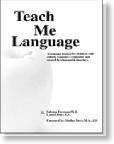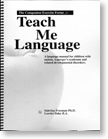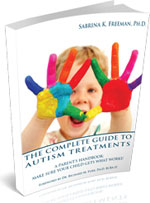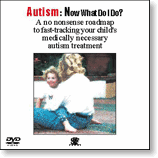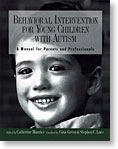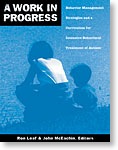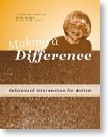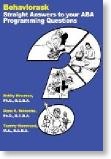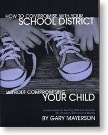diagnostic guidelines
Thomas Sowell Got it Half Right
08/06/12 11:14 Filed in: autism | Asperger's Syndrome
In his latest article, Redefining autism a sales tactic, Dr. Thomas Sowell, Rose and Milton Friedman Senior Fellow on Public Policy at the Hoover Institution at Stanford University, makes the point that autism is being redefined and many more children who would not be diagnosed as autistic in the past are being diagnosed today in greater numbers. His argument is that the redefining of autism to include a larger number of children is a way for politicians to bleed more money from the taxpayer. Dr. Sowell clearly understands the condition of genuine autism when he states:
Every dollar spent on children falsely labelled autistic is a dollar lost -- and urgently needed -- in dealing with the severe problems of genuinely autistic children.
Prior to the reclassification of autism in the DSM-V, I would have disagreed vociferously with his argument regarding the purported motive of politicians. Perhaps abuse occurred in the past due to economic incentives, with some children being diagnosed with autism, rather than intellectual impairment or speech and language; however, full fledged autism is so obvious that the occasional parent on the margin who conspires with a diagnostician would not account for the true explosion of children with autism that we see today. It is my view that we do have a real increase in children with autism.
Unfortunately, with the introduction of the DSM-V, we have a new diagnostic classification of autism that includes an army of children who are very mildly affected. This is going to:
Although I’m not sure that I would agree with Sowell’s argument that the motive of politicians is to overtax the public by using autism as an excuse, it is correct that with the new diagnostic criteria, treatment for children with autism is in danger of being rationed. So if you have a child with genuine autism, get ready for a fight.
Every dollar spent on children falsely labelled autistic is a dollar lost -- and urgently needed -- in dealing with the severe problems of genuinely autistic children.
Prior to the reclassification of autism in the DSM-V, I would have disagreed vociferously with his argument regarding the purported motive of politicians. Perhaps abuse occurred in the past due to economic incentives, with some children being diagnosed with autism, rather than intellectual impairment or speech and language; however, full fledged autism is so obvious that the occasional parent on the margin who conspires with a diagnostician would not account for the true explosion of children with autism that we see today. It is my view that we do have a real increase in children with autism.
Unfortunately, with the introduction of the DSM-V, we have a new diagnostic classification of autism that includes an army of children who are very mildly affected. This is going to:
- give the neuro-diversity folks legitimacy for the bogus contention that they suffer from autism and can therefore speak for children with autism who are nonverbal,
- have autism redefined as a “difference” rather than a disabling condition,
- provide “hothousing” opportunities for parents whose children do not suffer from autism or Asperger’s syndrome,
- bleed resources from children who truly need intensive behavioral treatment in order to be productive, functional adults who can live a life in dignity rather than being institutionalized
- justify the rationing of treatment from the most severely affected children due to the fact that they will not advance as quickly as the others on the autism spectrum. This rationing will come from educational systems, health-care systems and/or insurance companies.
Although I’m not sure that I would agree with Sowell’s argument that the motive of politicians is to overtax the public by using autism as an excuse, it is correct that with the new diagnostic criteria, treatment for children with autism is in danger of being rationed. So if you have a child with genuine autism, get ready for a fight.
We Parents Need to Improve our Chess Game
02/02/12 14:51 Filed in: autism | Asperger's Syndrome
In the past decade, there has been a concerted effort on the part of many parents to make sure that autism and Asperger’s syndrome are differentiated as two distinct diagnoses.
Separating autism from Asperger’s syndrome has been important for several reasons:
- the needs of these two groups vary considerably,
- people with Asperger’s syndrome should not be stigmatized with autism, which is a much more debilitating condition,
- people with Asperger’s syndrome should not feel that they have license to speak for people with autism, &
- it harms people with autism to be considered the same as those with Asperger’s syndrome because, generally, they need much more in the way of treatment, support and supervision.
Opponents to the amalgamation of the two diagnoses say that it is meaningless to differentiate between the two categories because some high functioning adults with autism appear identical to adults with Asperger’s syndrome.
I have always thought that this was a function of effective autism intervention and look at this “problem” as success! I am prepared to live with the concept that great intervention may lead to a change in diagnosis.
In addition, many parents of children with Asperger’s syndrome were worried that differentiation in the Autism Spectrum Disorder may possibly lead to a decrease in services for their children. I understand the sentiment and know that those who fund treatment are generally very quick to pull funding whenever they can; however, I’ve always thought that this path ultimately harms all children with autism spectrum disorder.
Now we see it happening. By eliminating the Asperger’s syndrome diagnosis through its supposed amalgamation into autism, not only have people with Asperger’s syndrome been denied their own diagnosis, but also many people with autism are without a clearly defined diagnosis even though they still have autism.
In other words, the powers that be have just put our children’s future in jeopardy. The question is can we get out of trouble, or will we be outmaneuvered?
The Law of Unintended Consequences Meets Autism Mandates: Why Autism and Asperger's Syndrome Seem Interchangeable
08/11/11 10:45 Filed in: autism | Asperger's Syndrome
The funding incentive often explains much of what seems illogical.
Today we have yet another article about the confusion between autism and Asperger’s syndrome. It appears that despite the similar scores on various tests given during an ASD assessment, there is wide variation across the U.S. between the number of children given a diagnosis of either Asperger’s syndrome or autism. The study’s researchers urge parents not to concentrate too much on the difference between autism, PDD-NOS, and Asperger’s syndrome, but rather, to look at the child’s difficulties and try to get them help.
For most of us, this sounds like reasonable advice.
However, to anyone who understands the politics of autism, it becomes abundantly clear that these researchers are completely disconnected from the various issues with which parents must contend when it comes to autism spectrum disorders. Parents need an objective diagnosis in order to do research on how to get help; however, if treatment and support services are not provided for those with any diagnosis other than autism, parents are put into an impossible situation. On the one hand, parents need the truth about where their child is diagnosed on the autism spectrum; on the other hand, that truth may create a barrier to treatment services, if society predicates a formal autism label to service or insurance dollars.
Based on recommendations of the study’s authors, it’s obvious these researchers don’t have a clue regarding what parents actually goes through.
The confusion, which is actually a complete mismanagement of the field of autism spectrum disorders, is then used by researchers as a justification to move toward a general diagnosis of ASD, rather than differentiating between Asperger’s syndrome, PDD-NOS, and autism. This advice is political rather than clinical. We know the difference between autism and Asperger’s syndrome and we desperately need accurate diagnoses! Autism and Asperger’s syndrome must be differentiated for the benefit of both groups of children and adults. An accurate Asperger’s syndrome diagnosis must never be an obstacle to treatment funding.
A better idea: 1) have states’ mandates cover all ASD treatments, and then 2) use objective criteria to differentiate between autism, PDD-NOS, and Asperger’s syndrome. Once access to treatment services dollars are decoupled from the diagnostic label, researchers may be pleasantly surprised as to how the autism- Asperger’s syndrome confusion will cease to be an issue.
Today we have yet another article about the confusion between autism and Asperger’s syndrome. It appears that despite the similar scores on various tests given during an ASD assessment, there is wide variation across the U.S. between the number of children given a diagnosis of either Asperger’s syndrome or autism. The study’s researchers urge parents not to concentrate too much on the difference between autism, PDD-NOS, and Asperger’s syndrome, but rather, to look at the child’s difficulties and try to get them help.
For most of us, this sounds like reasonable advice.
However, to anyone who understands the politics of autism, it becomes abundantly clear that these researchers are completely disconnected from the various issues with which parents must contend when it comes to autism spectrum disorders. Parents need an objective diagnosis in order to do research on how to get help; however, if treatment and support services are not provided for those with any diagnosis other than autism, parents are put into an impossible situation. On the one hand, parents need the truth about where their child is diagnosed on the autism spectrum; on the other hand, that truth may create a barrier to treatment services, if society predicates a formal autism label to service or insurance dollars.
Based on recommendations of the study’s authors, it’s obvious these researchers don’t have a clue regarding what parents actually goes through.
The confusion, which is actually a complete mismanagement of the field of autism spectrum disorders, is then used by researchers as a justification to move toward a general diagnosis of ASD, rather than differentiating between Asperger’s syndrome, PDD-NOS, and autism. This advice is political rather than clinical. We know the difference between autism and Asperger’s syndrome and we desperately need accurate diagnoses! Autism and Asperger’s syndrome must be differentiated for the benefit of both groups of children and adults. An accurate Asperger’s syndrome diagnosis must never be an obstacle to treatment funding.
A better idea: 1) have states’ mandates cover all ASD treatments, and then 2) use objective criteria to differentiate between autism, PDD-NOS, and Asperger’s syndrome. Once access to treatment services dollars are decoupled from the diagnostic label, researchers may be pleasantly surprised as to how the autism- Asperger’s syndrome confusion will cease to be an issue.
Routine screening for autism is not routine enough
28/10/11 10:40 Filed in: autism | Asperger's Syndrome
Everyone talks about how crucial early diagnosis is for children with autism. I wholeheartedly agree. Why then, are we having such a difficult time making this happen? The screening process is quick, easy and unobtrusive. What is the obstacle then? Read more...


